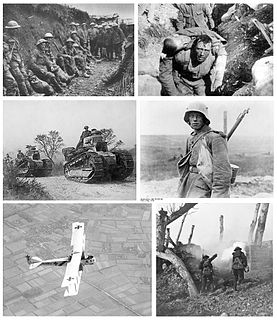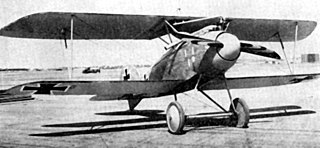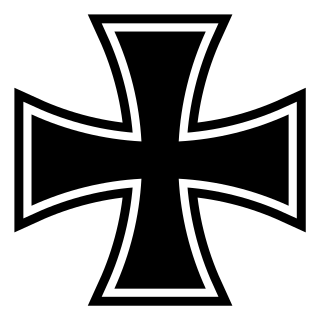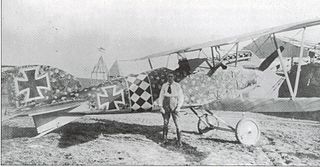Max Kahlow | |
|---|---|
| Born | 11 May 1894 Bad Schoenfließ, German Empire (present day Poland) |
| Died | Unknown |
| Allegiance | German Empire |
| Service/ | Aviation |
| Years of service | 1913-1918 |
| Rank | Vizefeldwebel |
| Unit | FA 42, Jagdstaffel 34 |
| Awards | Iron Cross |
Vizefeldwebel Max Kahlow (born 11 May 1894, date of death unknown) was a German World War I flying ace credited with six aerial victories. [1]

Germany, officially the Federal Republic of Germany, is a country in Central and Western Europe, lying between the Baltic and North Seas to the north and the Alps, Lake Constance, and the High Rhine to the south. It borders Denmark to the north, Poland and the Czech Republic to the east, Austria and Switzerland to the south, France to the southwest, and Luxembourg, Belgium, and the Netherlands to the west.

World War I, also known as the First World War, the Great War, the Seminal Catastrophe, and initially in North America as the European War, was a global war originating in Europe that lasted from 28 July 1914 to 11 November 1918. Contemporaneously described as "the war to end all wars", it led to the mobilisation of more than 70 million military personnel, including 60 million Europeans, making it one of the largest wars in history. It is also one of the deadliest conflicts in history, with an estimated nine million combatants and seven million civilian deaths as a direct result of the war, while resulting genocides and the resulting 1918 influenza pandemic caused another 50 to 100 million deaths worldwide.

A flying ace, fighter ace or air ace is a military aviator credited with shooting down several enemy aircraft during aerial combat. The actual number of aerial victories required to officially qualify as an ace has varied, but is usually considered to be five or more.









